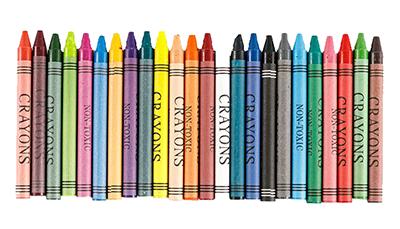- English
- Español
- Português
- русский
- Français
- 日本語
- Deutsch
- tiếng Việt
- Italiano
- Nederlands
- ภาษาไทย
- Polski
- 한국어
- Svenska
- magyar
- Malay
- বাংলা ভাষার
- Dansk
- Suomi
- हिन्दी
- Pilipino
- Türkçe
- Gaeilge
- العربية
- Indonesia
- Norsk
- تمل
- český
- ελληνικά
- український
- Javanese
- فارسی
- தமிழ்
- తెలుగు
- नेपाली
- Burmese
- български
- ລາວ
- Latine
- Қазақша
- Euskal
- Azərbaycan
- Slovenský jazyk
- Македонски
- Lietuvos
- Eesti Keel
- Română
- Slovenski
- मराठी
- Srpski језик
What are the types of crayons?
2024-04-23
Crayons are pens made by mixing paint into wax. They can come in dozens of colors and are used for drawing. Crayons have no permeability and are fixed on the picture by adhesion. It is not suitable to use paper or boards that are too smooth, nor can composite colors be obtained by repeated superposition of colors. It is an ideal tool for children to learn color painting, and some painters use it for sketching and color recording.

1.Color crayons
Pastels made from compressed chalk, pigment powder and adhesive. Paintings created with this type of crayon are called pastel paintings. The traditional binding material is gum tragacanth. When the binding material is linseed, the crayon is called oil pastel. Pastels are used to draw on rough paper, cardboard, or special canvases. Pastel drawings are easily damaged because they blur when touched. Fixatives can protect the image, but are not recommended because they darken the color. The best way to protect your pastel paintings is to frame them in glass.
When carefully cared for, pastel paintings retain their freshness and color longer than oil paintings or watercolors. They won't fade like oil paintings or become damp like watercolors. The beauty of pastel painting lies mainly in its soft, velvety surface, which gives the painting a depth and atmosphere of color harmony that his method could not achieve. Color pastels are particularly useful for portraits, still lifes, and some landscapes.
2.Pull string crayons
The pull-string crayon is a new type of crayon that has obtained the international NON-TOXIC non-toxic certification and passed the European standard EN71 Part1-3. This string crayon is made of raw materials imported from Japan, with high quality, bright color, uniform color, no clumping, and continuous core. When using it, tear it off by hand and use paper as the shell. No need to use a knife to cut it. It is easy to use, economical and not expensive.
This product is widely used as an excellent material for marking or marking in industrial processing and production of clothing, cloth, leather, shoemaking, metal, wood, ceramics, glass, paper products, etc. Especially it is an excellent product used in auxiliary processing in the clothing, leather goods, and shoemaking industries, and it is also well-known in this industry.




